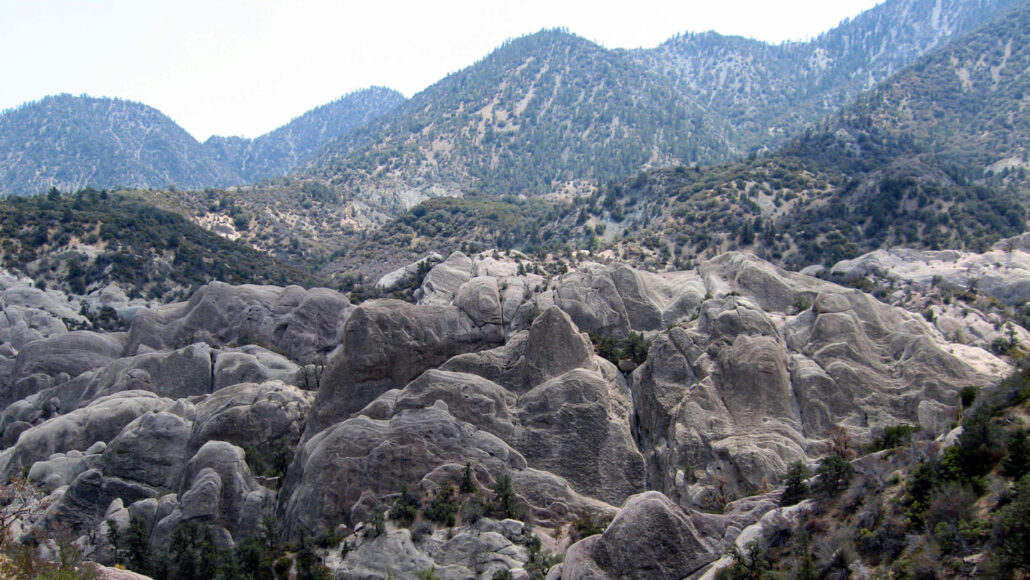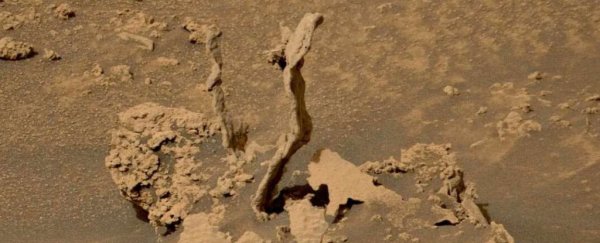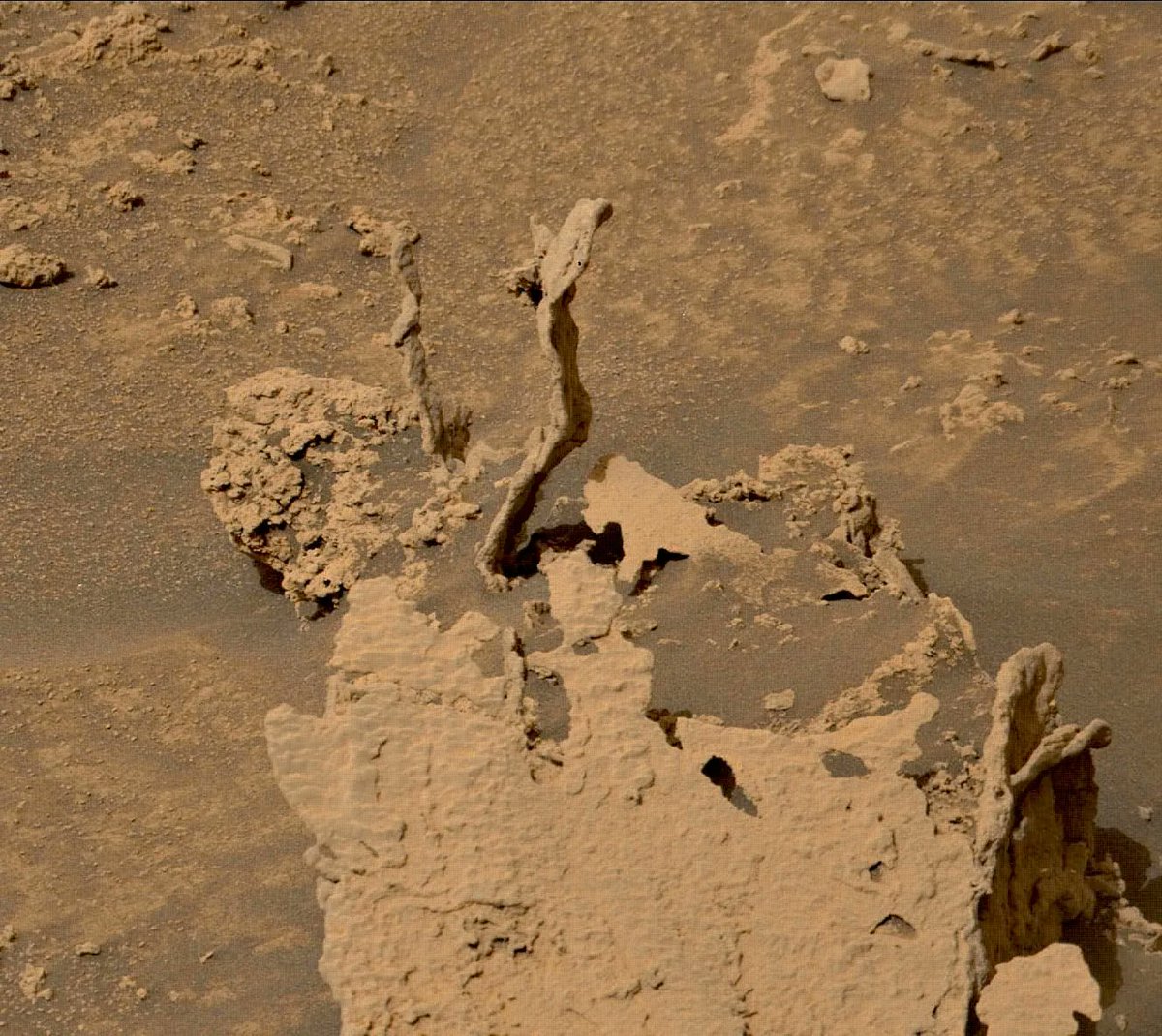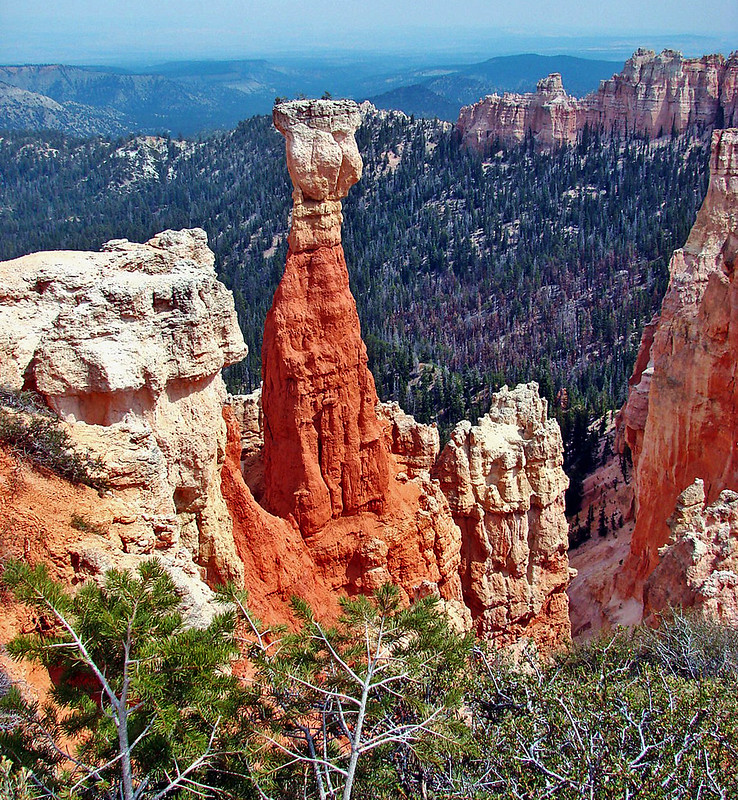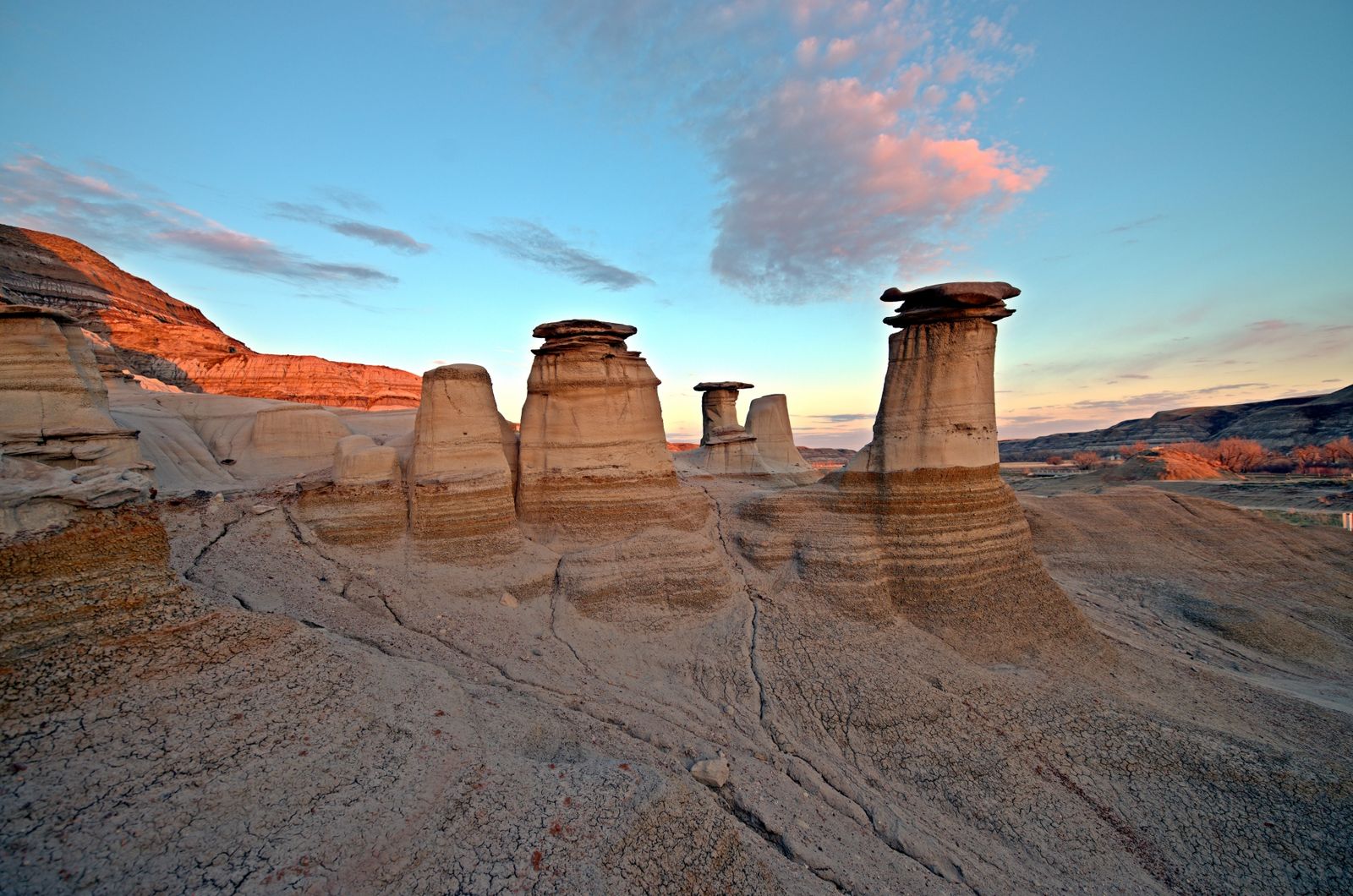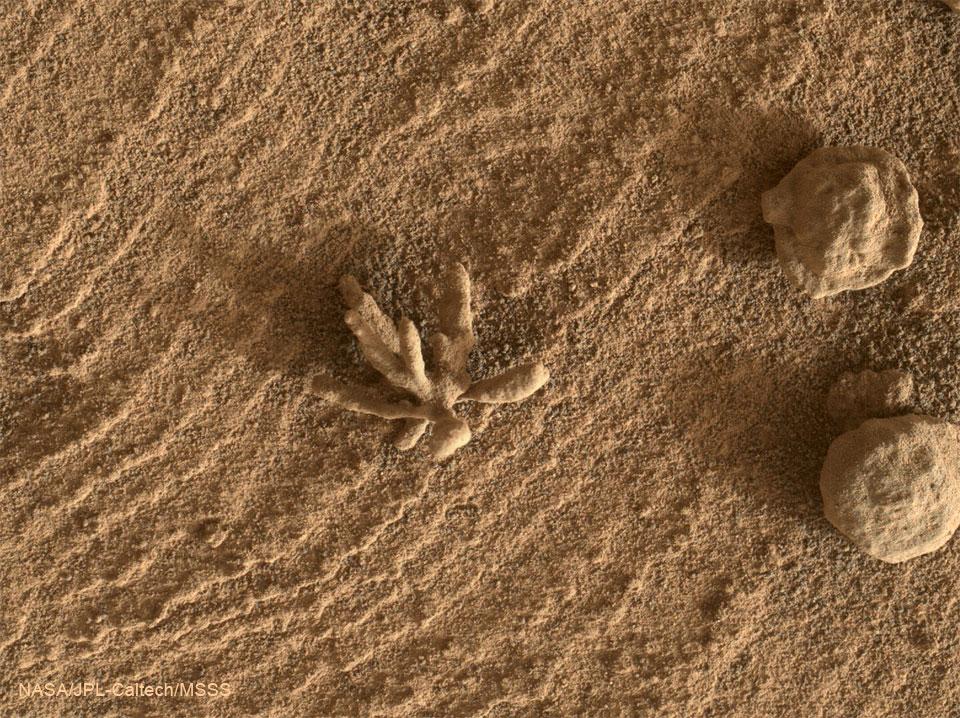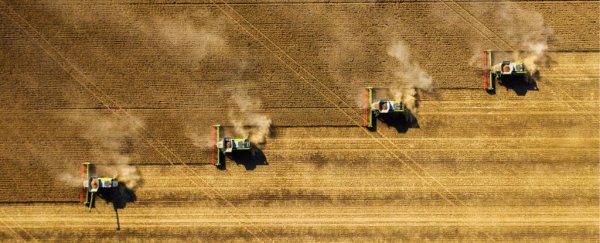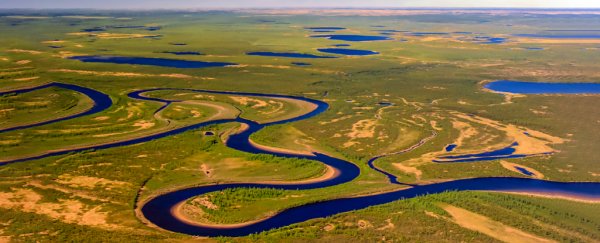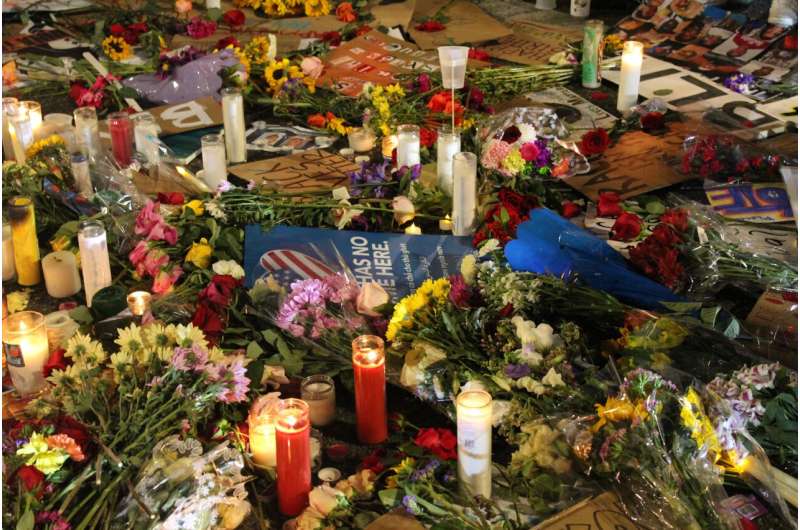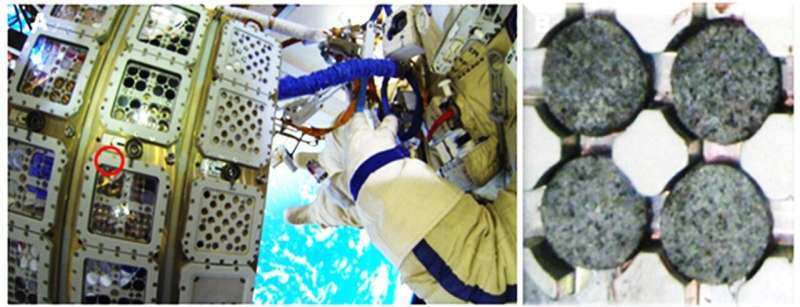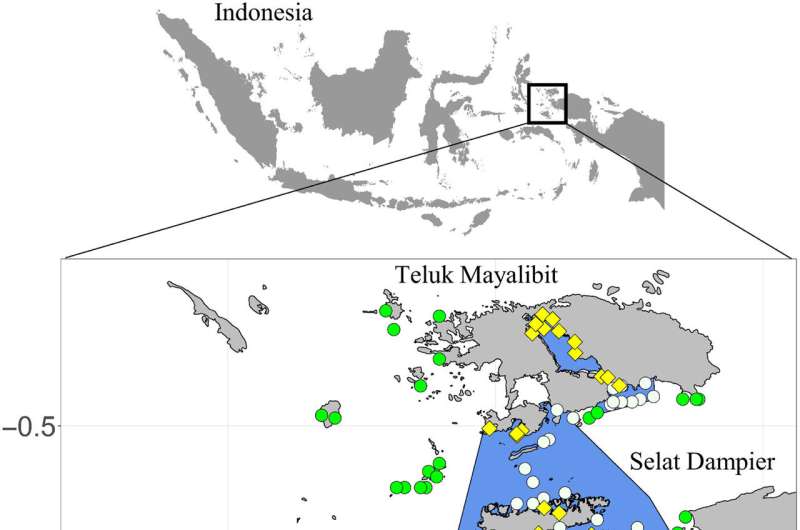Los Alamos National Laboratory says it’s prepared, but an audit in 2021 suggests it’s not
By James R. Riordon
Guest Writer
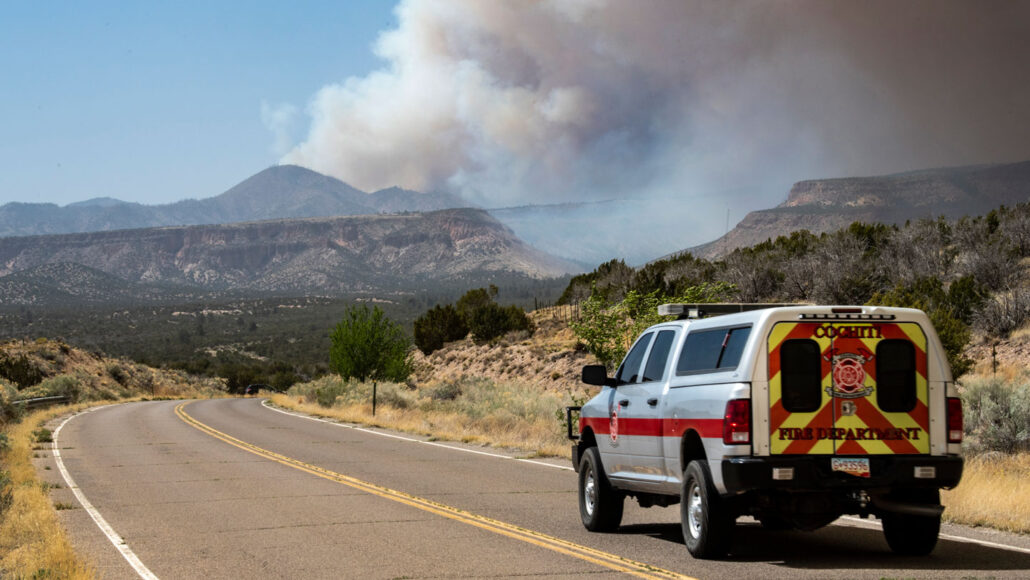
At one point, the Cerro Pelado fire in New Mexico came within about six kilometers of Los Alamos National Laboratory, the birthplace of the atomic bomb. Here, smoke from the fire is seen on April 29.
ROBERT BROWMAN/THE ALBUQUERQUE JOURNAL VIA AP
There are things I will always remember from my time in New Mexico. The way the bark of towering ponderosa pines smells of vanilla when you lean in close. Sweeping vistas, from forested mountaintops to the Rio Grande Valley, that embellish even the most mundane shopping trip. The trepidation that comes with the tendrils of smoke rising over nearby canyons and ridges during the dry, wildfire-prone summer months.
There were no major wildfires near Los Alamos National Laboratory during the year and a half that I worked in public communications there and lived just across Los Alamos Canyon from the lab. I’m in Maryland now, and social media this year has brought me images and video clips of the wildfires that have been devastating parts of New Mexico, including the Cerro Pelado fire in the Jemez Mountains just west of the lab.
Wherever they pop up, wildfires can ravage the land, destroy property and displace residents by the tens of thousands. The Cerro Pelado fire is small compared with others raging east of Santa Fe — it grew only to the size of Washington, D.C. The fire, which started mysteriously on April 22, is now mostly contained. But at one point it came within 5.6 kilometers of the lab, seriously threatening the place that’s responsible for creating and maintaining key portions of fusion bombs in our nation’s nuclear arsenal.
That close call may be just a hint of growing fire risks to come for the weapons lab as the Southwest suffers in the grip of an epic drought made worse by human-caused climate change (SN: 4/16/20). May and June typically mark the start of the state’s wildfire season. This year, fires erupted in April and were amplified by a string of warm, dry and windy days. The Hermits Peak and Calf Canyon fires east of Santa Fe have merged to become the largest wildfire in New Mexico’s recorded history.
Los Alamos National Lab is in northern New Mexico, about 56 kilometers northwest of Santa Fe. The lab’s primary efforts revolve around nuclear weapons, accounting for 71 percent of its $3.9 billion budget, according the lab’s fiscal year 2021 numbers. The budget covers a ramp-up in production of hollow plutonium spheres, known as “pits” because they are the cores of nuclear bombs, to 30 per year beginning in 2026. That’s triple the lab’s current capability of 10 pits per year. The site is also home to radioactive waste and debris that has been a consequence of weapons production since the first atomic bomb was built in Los Alamos in the early 1940s (SN: 8/6/20).
What is the danger due to fire approaching the lab’s nuclear material and waste? According to literature that Peter Hyde, a spokesperson for the lab, sent to me to ease my concern, not much.
Over the last 3½ years, the lab has removed 3,500 tons of trees and other potential wildfire fuel from the sprawling, 93-square-kilometer complex. Lab facilities, a lab pamphlet says, “are designed and operated to protect the materials that are inside, and radiological and other potentially hazardous materials are stored in containers that are engineered and tested to withstand extreme environments, including heat from fire.”
What’s more, most of roughly 20,000 drums full of nuclear waste that were stored under tents on the lab’s grounds have been removed. They were a cause for anxiety during the last major fire to threaten the lab in 2011. According to the most recent numbers on the project’s website, all but 3,812 of those drums have been shipped off to be stored 655 meters underground at the Waste Isolation Pilot Plant near Carlsbad, N.M.
But there’s still 3,500 cubic meters of nuclear waste in the storage area, according to a March 2022 DOE strategic planning document for Los Alamos. That’s enough to fill 17,000 55-gallon drums. So potentially disastrous quantities of relatively exposed nuclear waste remain at the lab — a single drum from the lab site that exploded after transport to Carlsbad in 2014 resulted in a two-year shutdown of the storage facility. With a total budgeted cleanup cost of $2 billion, the incident is one of the most expensive nuclear accidents in the nation’s history.
Since the 2011 fire, a wider buffer space around the tents has been cleared of vegetation. In conjunction with fire suppression systems, it’s unlikely that wildfire will be a danger to the waste-filled drums, according to a 2016 risk analysis of extreme wildfire scenarios conducted by the lab.
But a February 2021 audit by the U.S. Department of Energy’s Office of Inspector General is less rosy. It found that, despite the removal of most of the waste drums and the multiyear wildfire mitigation efforts that the lab describes, the lab’s wildfire protection is still lacking.
According to the 20-page federal audit, the lab at that time had not developed a “comprehensive, risk-based approach to wildland fire management” in accordance with federal policies related to wildland fire management. The report also noted compounding issues, including the absence of federal oversight of the lab’s wildfire management activities.
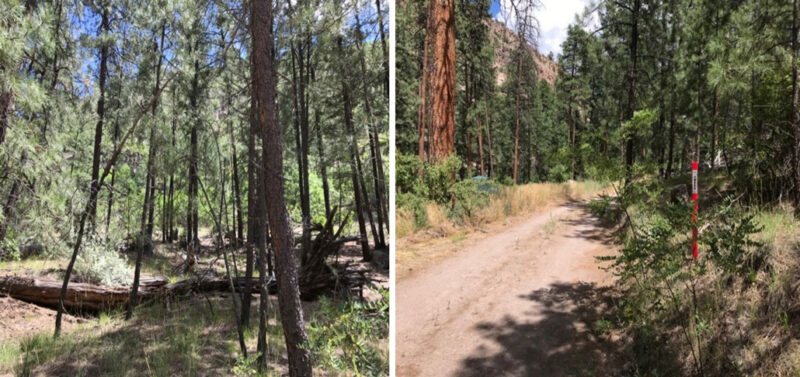
Among the ongoing risks, not all fire roads were maintained well enough to provide a safe route for firefighters and others, “which could create dangerous conditions for emergency responders and delay response times,” the auditors wrote.
And a canyon that runs between the lab and the adjacent town of Los Alamos was identified in the report as being packed with 10 times the number of trees that would be ideal, from a wildfire safety perspective. To make matters worse, there’s a hazardous waste site at the bottom of the canyon that could, the auditors wrote, “produce a health risk to the environment and to human health during a fire.”
“The report was pretty stark,” says Edwin Lyman, director of nuclear power safety at the Union of Concerned Scientists. “And certainly, after all the warnings, if they’re still not doing all they need to do to fully mitigate the risk, then that’s just foolishness.”
A 2007 federal audit of Los Alamos, as well as nuclear weapons facilities in Washington state and Idaho, showed similar problems. In short, it seems little has changed at Los Alamos in the 14-year span between 2007 and 2021. Lab spokespeople did not respond to my questions about the lab’s efforts to address the specific problems identified in the 2021 report, despite repeated requests.
The Los Alamos area has experienced three major wildfires since the lab was founded — the Cerro Grande fire in 2000, Las Conchas in 2011 and Cerro Pelado this year. But we probably can’t count on 11-year gaps between future wildfires near Los Alamos, according to Alice Hill, the senior fellow for energy and the environment with the Council on Foreign Relations, who’s based in Washington, D.C.
The changing climate is expected to dramatically affect wildfire risks in years to come, turning Los Alamos and surrounding areas into a tinderbox. A study in 2018 in Climatic Change found that the region extending from the higher elevations in New Mexico, where Los Alamos is located, into Colorado and Arizona will experience the greatest increase in wildfire probabilities in the Southwest. A new risk projection tool that was recommended by Hill, called Risk Factor, also shows increasing fire risk in the Los Alamos area over the next 30 years.
“We are at the point where we are imagining, as we have to, things that we’ve never experienced,” Hill says. “That is fundamentally different than how we have approached these problems throughout human history, which is to look to the past to figure out how to be safer in the future…. The nature of wildfire has changed as more heat is added [to the planet], as temperatures rise.”
Increased plutonium pit production will add to the waste that needs to be shipped to Carlsbad. “Certainly, the radiological assessments in sort of the worst case of wildfire could lead to a pretty significant release of radioactivity, not only affecting the workers onsite but also the offsite public. It’s troubling,” says Lyman, who suggests that nuclear labs like Los Alamos should not be located in such fire-prone areas.
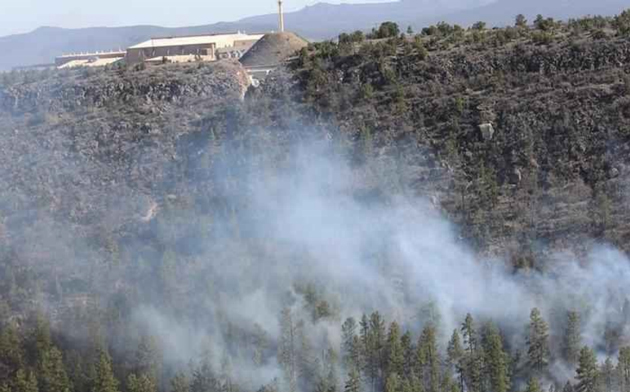
For now, some risks from the Cerra Pelado wildfire will persist, according to Jeff Surber, operations section chief for the U.S. Department of Agriculture Forestry Service’s efforts to fight the fire. Large wildfires like Cerra Pelado “hold heat for so long and they continue to smolder in the interior where it burns intermittently,” he said in a May 9 briefing to Los Alamos County residents, and to concerned people like me watching online.
It will be vital to monitor the footprint of the fire until rain or snow finally snuffs it out late in the year. Even then, some danger will linger in the form of “zombie fires” that can flame up long after wildfires appear to have been extinguished (SN: 5/19/21). “We’ve had fires come back in the springtime because there was a root underground that somehow stayed lit all winter long,” said Surber.
So the Cerro Pelado fire, and its occasional smoky tendrils, will probably be a part of life in northern New Mexico for months still. And the future seems just as fiery, if not worse. That’s something all residents, including the lab, need to be preparing for.
Meantime, if you make it out to the mountains of New Mexico soon enough, be sure to sniff a vanilla-flavored ponderosa while you still can. I know I will.
